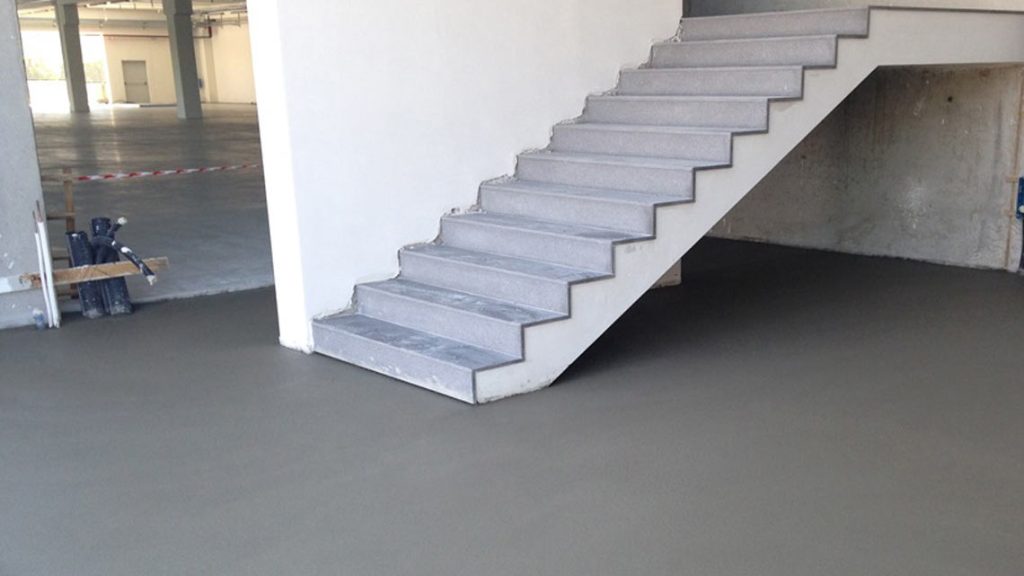Sand-cement screed
Sand-cement screed is a resistant support layer onto which the finished flooring such as parquet, tiles, resin floor coatings or linoleum is laid. It is obtained by mechanically mixing cement, clean and washed D. 0–4 mm silica sand aggregate from quarries, and clean water to achieve the consistency of “damp earth”.
The screed can be supplemented and reinforced with synthetic polypropylene fibres or with suitable galvanised electro-welded mesh reinforcement, depending on the intended use and thickness.
Furthermore, it can be improved and enhanced with specific additives, to be assessed for the work environment, work time and whether the substrate is bonded or floating.
In particular, a fluidising additive is generally recommended to make the mix smoother and improve the initial strength and quality of the screed surface; at the same time, it reduces the risk of abnormal shrinkage that can cause warping and cracking.
In addition, for wooden floors or quick laying requirements with thicknesses between 3 and 5 cm (in the case of underfloor heating systems, this means measured at the extrados of the boss and serpentine) there are additives to aid drying of the substrate to be laid to reach the required laying maturity. These give a mixture with a plastic consistency that improve the thermal transmittance and performance of the final screed. The laying environment must be checked in advance and treated to ensure constant temperature and humidity.
Self-levelling screeds
Self-levelling screeds are made from a mixture of cement, sand and chemical additives that, when combined with water, make the mixture very fluid and thus easier to level and quicker to lay.
They are generally about 3 cm thick, which combined with their low heat insulation makes them also suitable for underfloor heating system applications.






